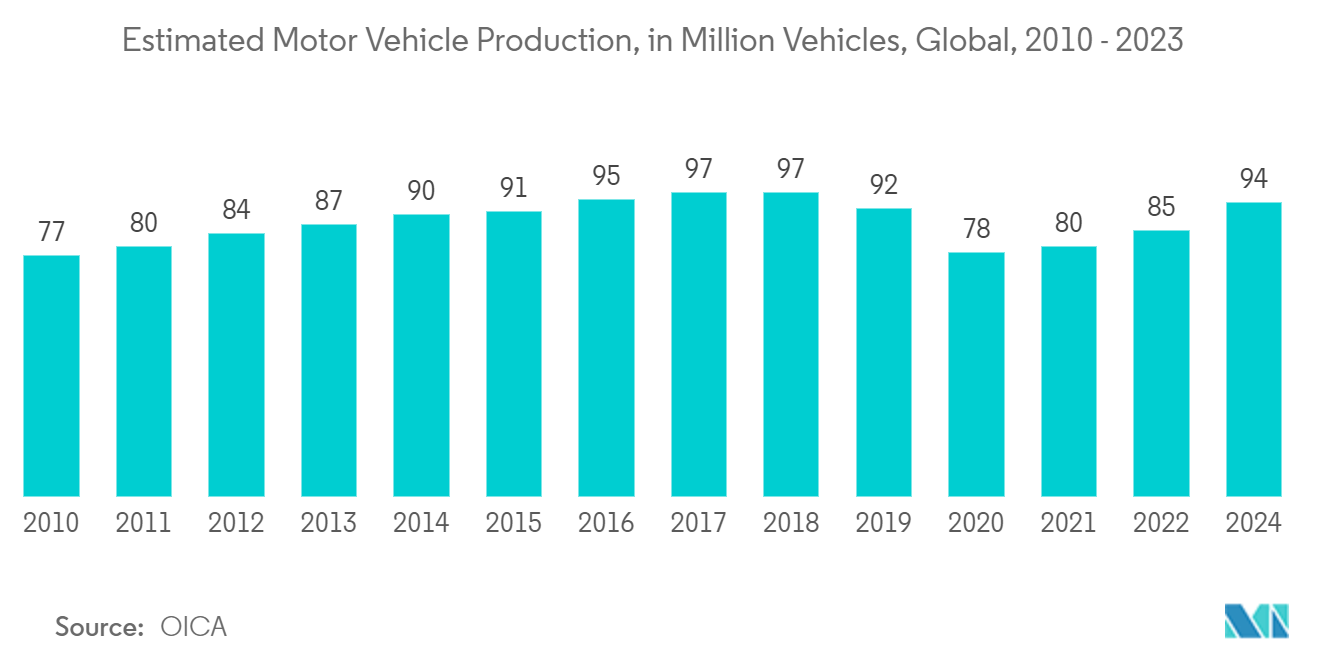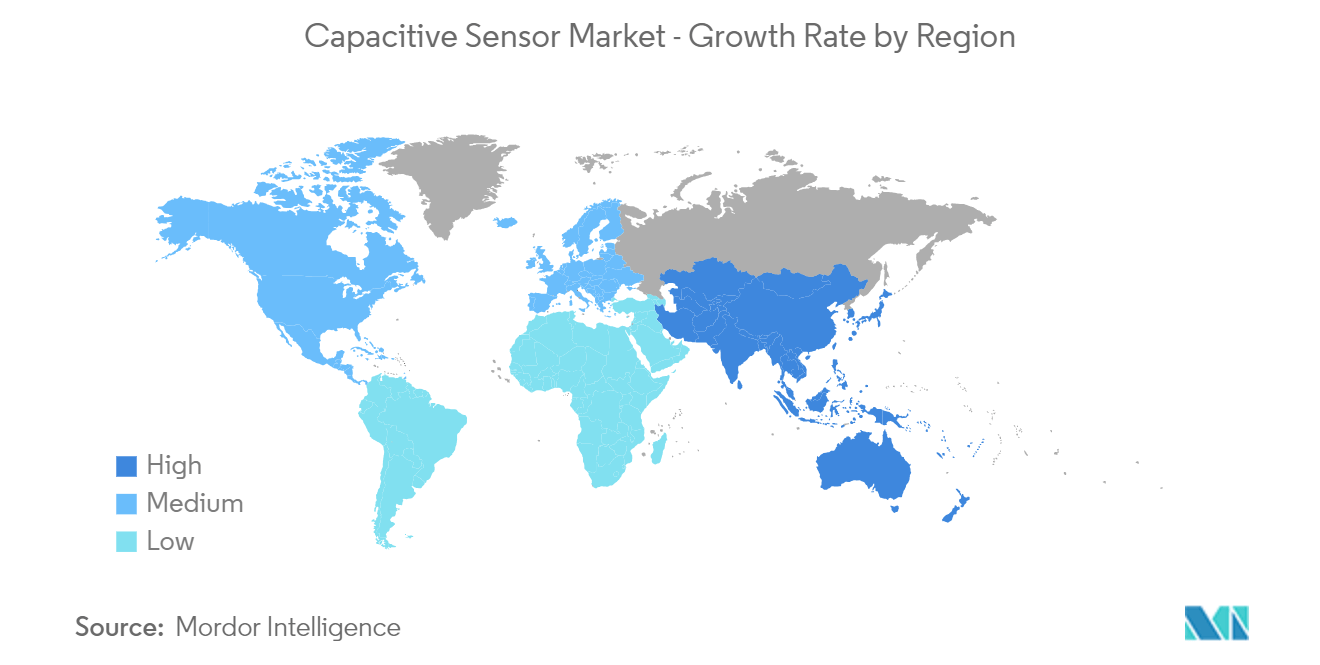Market Trends of Capacitive Sensors Industry
The Automotive End-user Industry is Expected to Hold Significant Market Share
- Human-machine interface technologies have witnessed a paradigm shift due to the increasing information interchange between social and various car systems. This has resulted in a surge in demand for capacitive sensors deployed to implement human-machine interface (HMI) applications, such as indoor illumination control, navigation control, etc.
- The automated vehicle will be nested with a position, humidity, temperature, and capacitive sensor, among others. These sensors are used in the infotainment system, keyless entry system, 3D gesture, interior lighting control, etc. With the increase in global automotive penetration, the demand for these sensors, including the capacitive sensor, will increase in the forecast period.
- For example, in the parking assistance system, these sensors can detect the presence of objects in the pathway of the reversing vehicle and can raise the alarm to warn the driver. These sensors also prevent collisions with pedestrians while parking, and the demand is expected to continue during the forecast period.
- The global pandemic has influenced the automotive and manufacturing industries significantly over the period of last year. The manufacturing industry shrunk significantly due to the pandemic as the industry faced unprecedented challenges in the supply chain and procurement of raw materials, which resulted in significant losses for manufacturers.
- According to OICA, In 2023, approximately 85 million motor vehicles were produced globally. This figure translates into an increase of around six percent compared with the previous year. China, Japan, and Germany were the largest producers of cars and commercial vehicles in 2022.

Asia Pacific is Expected to Hold Significant Market Share
- The established electronics industry in Asia Pacific and the adoption of innovative technologies have provided the regional organizations a competitive edge in the market studied. Moreover, the region enjoys the presence of several major capacitive sensor vendors, such as Omron Corporation (Japan) and Fujitsu Ltd (Japan), among others.
- The growing strategic collaborations in the country to boost the electric vehicle production are set to boost the market in the country. Sony Group Corporation and Honda Motor Co., Ltd. stated in March 2022 that they would continue to discuss and explore the possibility of forging a strategic alliance to usher in a new era of mobility and mobility services. The two firms have signed a memorandum of understanding outlining their intention to form a joint venture to collaborate on the development and sale of high-value-added battery electric vehicles, as well as to commercialize them in conjunction with mobility services.
- India is one of the major countries leading in electronics and automotive manufacturing sector. The country is one of the largest consumer electronics market in Asia pacific region. As stated by the India Brand Equity Foundation, Indian appliance and consumer electronics industry is expected to double to reach RUP 1.48 lakh crore (USD 18 Billion) by 2025. According to Retailers Association of India (RAI), sales of consumer electronics and appliances in the third quarter of FY21 increased by 23.5 percent, as compared with same period in the last fiscal year.
- Moreover in 2020, the Indian government targeted China with new restrictions on color television and mobile phoneswhich isset to increase their production by 5-8 percent in FY22. Furthermore, the government anticipates that the Indian electronics manufacturing sector will reach USD 300 billion by 2024–25.
- Under a national roadmap devised by the South Korean Government, Samsung Electronics Co. and SK Hynix Inc. would lead more than 510 trillion won in investment in semiconductor research and production in the years through 2030. Samsung plans to increase its spending by 30 percent to USD 151 billion by 2030, while Hynix plans to invest USD 97 billion in current facilities in addition to its USD 106 billion investment in four new factories.


